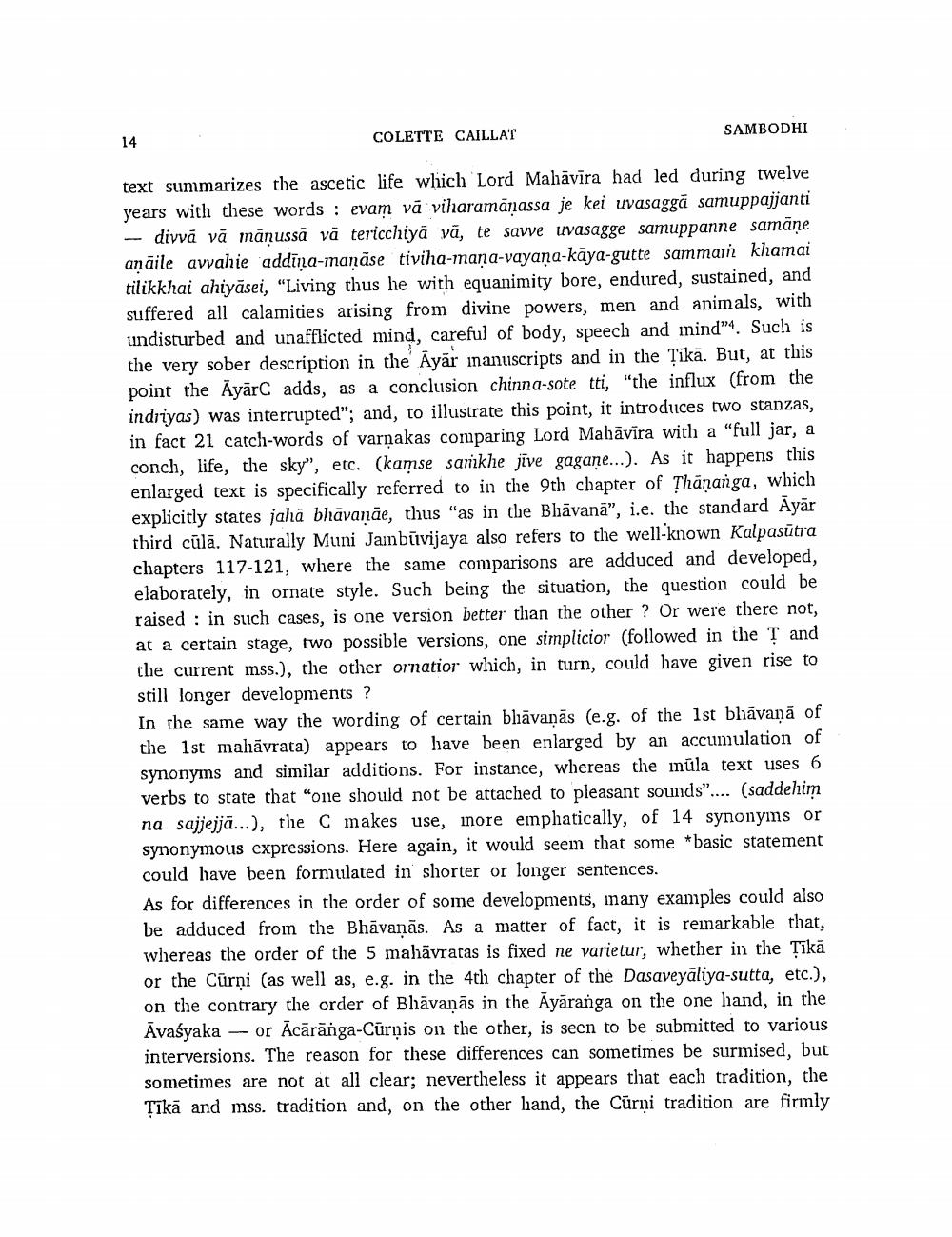________________
14
COLETTE CAILLAT
SAMBODHI
text summarizes the ascetic life which Lord Mahavira had led during twelve years with these words: evam va viharamānassa je kei uvasaggā samuppajjanti
divvá vā mānussä và tericchtyä vä, te savve uvasagge samuppanne samane aṇaile avvahie addiņa-manase tiviha-mana-vayaṇa-kaya-gutte sammanh khamai tilikkhai ahiyasei, "Living thus he with equanimity bore, endured, sustained, and suffered all calamities arising from divine powers, men and animals, with undisturbed and unafflicted mind, careful of body, speech and mind". Such is the very sober description in the Ayar manuscripts and in the Tika. But, at this point the AyarC adds, as a conclusion chinna-sote tti, "the influx (from the indriyas) was interrupted"; and, to illustrate this point, it introduces two stanzas, in fact 21 catch-words of varnakas comparing Lord Mahavira with a "full jar, a conch, life, the sky", etc. (kamse samkhe jive gagane...). As it happens this enlarged text is specifically referred to in the 9th chapter of Thananga, which explicitly states jaha bhavanãe, thus "as in the Bhavana", i.e. the standard Ayär third cula. Naturally Muni Jambūvijaya also refers to the well-known Kalpasūtra chapters 117-121, where the same comparisons are adduced and developed, elaborately, in ornate style. Such being the situation, the question could be raised in such cases, is one version better than the other? Or were there not, at a certain stage, two possible versions, one simplicior (followed in the T and the current mss.), the other ornatior which, in turn, could have given rise to still longer developments ?
In the same way the wording of certain bhāvanās (e.g. of the 1st bhavana of the 1st mahavrata) appears to have been enlarged by an accumulation of synonyms and similar additions. For instance, whereas the mula text uses 6 verbs to state that "one should not be attached to pleasant sounds".... (saddehim na sajjejjä...), the C makes use, more emphatically, of 14 synonyms or synonymous expressions. Here again, it would seem that some *basic statement could have been formulated in shorter or longer sentences.
As for differences in the order of some developments, many examples could also be adduced from the Bhāvanas. As a matter of fact, it is remarkable that, whereas the order of the 5 mahāvratas is fixed ne varietur, whether in the Tikä or the Cürni (as well as, e.g. in the 4th chapter of the Dasaveyāliya-sutta, etc.), on the contrary the order of Bhāvanās in the Ayäranga on the one hand, in the Avasyaka or Acaranga-Cürgis on the other, is seen to be submitted to various interversions. The reason for these differences can sometimes be surmised, but sometimes are not at all clear; nevertheless it appears that each tradition, the Tika and mss. tradition and, on the other hand, the Cürni tradition are firmly




